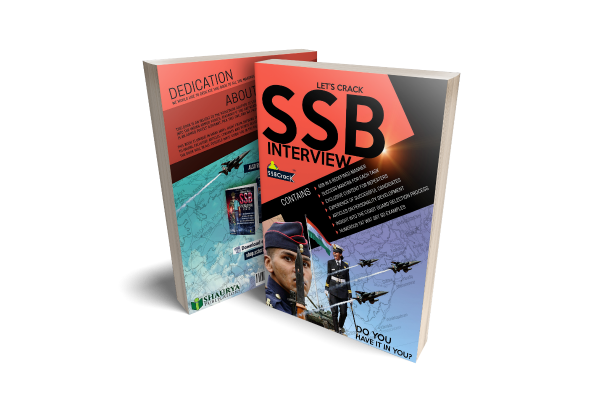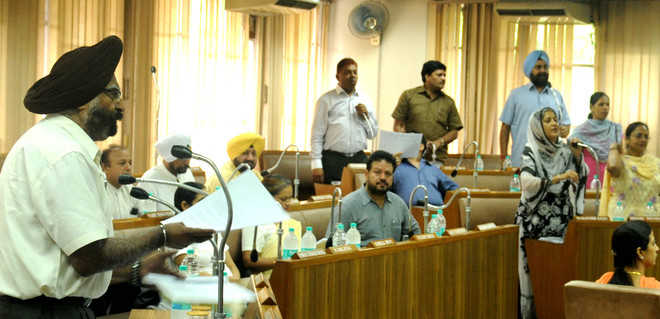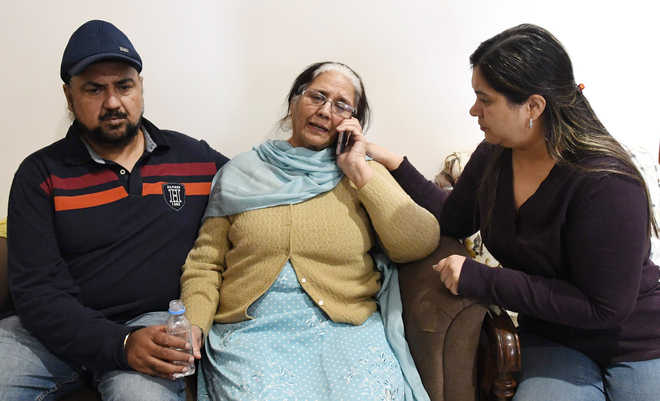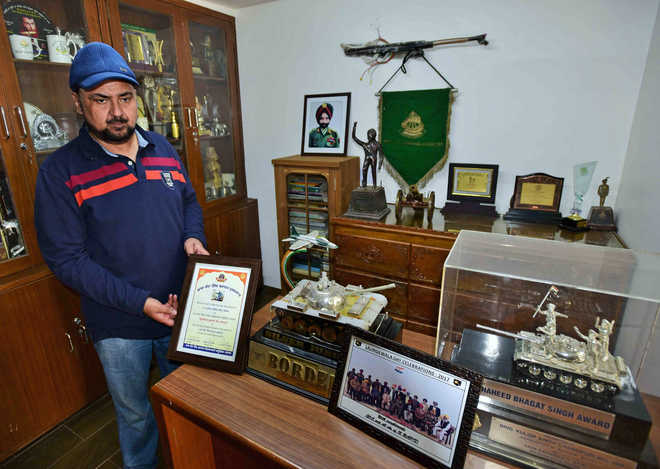









New Delhi, November 21
With border guarding force BSF facing the maximum brunt, in the last three nearly 400 paramilitary personnel lost their lives in operations in the country, including firing from across the Indo-Pak border and terrorist and insurgency-related incidences.
A senior Ministry of Home Affairs (MHA) official said as per the latest data available, of the total nearly 400 casualties in the line of duty, the maximum (167 personnel) from the BSF were killed between 2015 and 2017. A majority of them lost their lives while guarding the highly sensitive borders in Jammu and Kashmir.
The Central Reserve Police Force (CRPF) has lost 103 personnel, mostly while fighting Naxals and militancy in J&K, the MHA official said.
While the BSF lost 62 men in action in 2015, 58 in 2016 and 47 in 2017, the CRPF lost nine personnel in action in 2015, 42 in 2016 and 52 in 2017. As many as 48 personnel of the Sashastra Seema Bal (SSB) were killed in action, the official added.
The SSB guards the Indo-Bhutan and Indo-Nepal border. The troops of the force are also deployed in internal security duties. Sixteen were killed in 2015, 15 in 2016 and 17 in 2017. — TNS

Rafale fighter jet
Airpower is the most capital-intensive means of war. A modern fighter jet now could cost several hundred crores of rupees and the prices India’s first seem to be rising exponentially. The 36 Rafale deal is now estimated to be $9 billion or over ₹65,000 crores or about ₹1,500 crore each. While the Dassault Rafale will undoubtedly give us a formidable leading edge, it is its trail we must worry about. Besides, why do we want to buy the Rafale? It is somewhat closer to the Su-30MKI in class but almost four times more expensive than what is arguably the most capable and versatile of the world’s 4+ Gen fighters. It is eight times more expensive than Tejas.
The first lot of MIG-21s in 1961 cost us less than ₹20 lakh each. A brand new and latest MIG-21 variant will cost about one hundred times more. A SU30MKI costs about ₹360 crore each.
Aircraft delivered ordnance is also very expensive. For instance an air launched Brahmos supersonic missile costs over ₹15 crore each. The cost of the new smart weapons can be best understood from the following extract from a US government study after the second Gulf War: “While the vast majority of the expended ordnance was unguided—92.4%—the inverse was true for cost. About 84% of the cost was accounted for by the 7.6 % of ordnance that was guided. If the 332 cruise missiles are excluded—with their extremely high unit costs—unguided ordnance still represented about 92.6 percent of the total number expended, but the percentage of cost for ordnance that was guided decreases to 75.9%.”
The cost intensiveness of modern fighter aircraft requires they stay in service for decades and also be capable of maintaining air superiority and lethality in an environment where technological advancements are rapid
The cost intensiveness of modern fighter aircraft requires they stay in service for decades and also be capable of maintaining air superiority and lethality in an environment where technological advancements are rapid. This means that the aircraft we buy today must be capable of taking two or more upgrades. Thus, the later the design and development the greater are the upgrade options. Take, for example, the MIG-21, still the mainstay of the IAF.
The latest upgraded MIG-21 has all the latest avionics and the powerful Tumansky R-25 300 engine that enables it to attain a better than 1:1 thrust-to-weight ratio for a dogfight and out climb the American frontline fighter, the F-16.
The next major consideration is cost. There are ways to compute these, but there are pitfalls when you compare apples and oranges. In fact a sound equation correlating costs, age, lethality, performance, state of art, replacement and maintenance costs, political risk and other factors is well nigh impossible. But you must start with basic unit cost.
Since modern fighter aircrafts are not only extremely expensive but also technologically very advanced machinery constructed out of the latest materials and electronics, it goes without saying that full indigenisation will never be possible. A good percentage of the parts will always be imported, either from the original aircraft manufacturer or from original equipment manufacturers (OEM) in other countries. In times of conflict the wear and tear is greater and munitions stores run down very rapidly. The new generation missiles and bombs, most of which at all times will be imported, also do not have very long shelf lives. This means that supply lines must be always open.
The MRCAs are essentially supposed to be replacements for the older MIG-21, 23 and 27 series, and the indigenous Tejas LCA whose service entry service is now about fifteen years overdue
A multirole combat aircraft is an aircraft that can be used as both a fighter and a ground attack aircraft. A multirole fighter is differentiated from a strike fighter in that the multirole fighter was designed to equally perform both aerial combat and ground attack, while the strike fighter is typically a fighter aircraft that can also employ air-to-ground munitions.
The MRCAs are essentially supposed to be replacements for the older MIG-21, 23 and 27 series, and the indigenous Tejas LCA whose service entry service is now about fifteen years overdue. Of these the MIG-27 was a dedicated strike aircraft and the IAF still operates as many as 80 of them. The IAF also has 245 MIG-21bis fighters. We are talking about several hundred fighters. How does buying 36 Rafales be a solution? Clearly, the IAF needs a permanent solution, not another high cost fix like the Rafale.
The Tejas program commenced in 1983 and it is yet to enter full production. The reasons for this are many, but the IAF cannot shirk responsibility either as it has a track record of constantly delaying decisions and shifting goal posts. The IAF needs to be persuaded to shed its reluctance and urgently induct the Tejas light combat aircraft and push for newer and more powerful versions.
At about ₹200 crore each and but with a substantial local value addition component, the Tejas offers a huge cost-benefit advantage over Dassault Rafale multi-role fighter aircraft, as well as a huge economic multiplier. A few hundred Tejas jets of varying configurations can not only handle what the enemy can throw at us, but also contribute hugely to the national economy. After all, isn’t this is the underlying notion behind “Make in India?”
Dear Team, This is my journey from being an Army Officer’s son who has always wanted to be in the same boots as his father, to getting recommended for OTA, the same place where my father passed out from. First of all, it’s an amazing feeling of having successfully achieved something which brings you so much closer to your dream profession. Being from a thoroughbred fauji family, where most of my family members are and were army officers, my life has mostly been in and around the Army.
Recommended SSB Interview Books
This being said, I appeared for the CDS exams thrice. The first time was just self-study and a little bit of guidance from the internet, which I couldn’t pass. I then decided to attend a coaching class for preparations of written exam. The second time I appeared, which was after my coaching, I was a 100% confident that I’d make the cut but unfortunately, I couldn’t. Yes, I was disappointed but that gave me a stronger motivation to prepare even harder.
The third time I appeared for the exam, it was the CDS (1) 2018. It didn’t go as expected but when the results came out, I was able to make the cut. Thereafter when my SSB dates came, I chose the earliest date which was 12th October. How I prepared for SSB was mostly time practice for the psych tests.
Made PPTs with time according to the various tests and practiced them. This gave me an idea of what my writing speed is and also helped me improve it. My recommendation is to apply this to all the various tests. Time practice your Lecturette topics in front of your mirror or any friend, keep yourself fit for the GTO individual tasks and be updated with the latest GK. This was my first SSB attempt hence I was a fresher and had not taken any sort of coaching whatsoever for SSB.
The screening went well and I was confident that I’ll be getting screened in. What I did in the screening was what most people would tell you i.e. write a positive story. I did that but also since I’ve always been around Army, most of my stories in screening as well as the psych tests were about soldiers, their bravery, courage and all the good things about a soldier. And yes, be advised that the hero in the story that you’re writing about is actually you, so your stories reflect who you are.
During the course of the assessment, my interview went well and smooth. I’m also a professional Scuba Diver so mostly questions revolved around that. Yes, there were a few questions which I couldn’t answer but I assured the IO (Interviewing Officer) that I’ll make sure to go and check the answers right after the interview is over and I did just that.
GTO was the part which was most stressful of all for me. The 1st day of GTO, which comprised of Lecturette, group discussion, GPE (Group planning exercise), Progressive group task, Half group task. My recommendation here to all the aspirants during the GPE and GD is to be subtle. Not too loud and not quite as well. You need to speak and let others speak as well. Always move back and forth i.e. speak, then listen to everyone, speak and then listen to everyone and so on. Don’t try to be a leader in the very first step. Be a good contributor, a good listener and then strive to lead.
After that, the whole evening went over dreading about the outcomes of what I had done in the GTO. 2nd day of GTO went pretty well and was fun. The assessor asked me some basic questions to which my replies were confident and firm.

On the day of the conference, everyone was nervous and excited at the same time. We were going to the conference room one by one. I was chest number 2 so I was 2nd. I entered the room, wished the President and I was asked to sit. My IO asked me the same question which he asked me in the interview, “What are the things you think you need to improve in yourself. And as you’ve spent these 5 days in SSB with other candidates, what do you think about yourself that you need to improve in?”
To which my reply was similar to what I had said during the interview and added one more point to it. My tip here is that one should be truthful and honest in the interview and the conference but not disclose so much about oneself that it enables the assessor to go into the nitty-gritty of your personal life. One should mention their weakness but not so much so that rather than acting in your favour, acts against you. All in all this was my experience in SSB as a fresher and I’m not sure if the repeaters are subjected to same situations and questions but all I’d like to advise the aspirants and future warriors of our nation is that, while going through this assessment process think about the institution you’re going in, think about its essence and why this institution is the way it is, relate to it.
It’s not always about fighting and being loud and having an amazing personality. The army isn’t looking for brilliant people, who perhaps would be more suited to a profile of a scientist. The army is looking for people who would follow orders and execute them with perfection, like a normal person. SSB isn’t testing your knowledge, it’s testing your personality, the way you speak, walk and treat others.
The three tests, Interview, Psychology test, and GTO are testing the same things using different tools. With this, I’d like to wish all the aspirants all the very best for their future endeavors of becoming an officer.
Jai Hind

IMPORTANT – Download eBooks for SSB Interview Preparations
Free eBooks
As nominated councillor, he was instrumental in framing pet dog bylaws, promoted sports & made efforts for the construction of Martyrs’ Pillar

In this 2011 picture, Brig Kuldip Singh Chandpuri (retd) is seen raising a point as a nominated councillor during a meeting of the Municipal Corporation in Chandigarh. File Photo

Brigadier Chandpuri’s wife Surinder Kaur (centre) along with her son Hardip and daughter-in-law at their residence in Chandigarh on Saturday. Tribune photo: Manoj Mahajan

The war hero’s son shows the awards conferred on him during his exemplary career. Tribune photo: Manoj Mahajan
Ramkrishan Upadhyay
Tribune News Service
Chandigarh, November 17
While the hero of the 1971 Indo-Pak War, Brig Kuldip Singh Chandpuri (retd), will always be remembered for his bravery, those who worked with him during his tenure as a nominated councillor with the Chandigarh Municipal Corporation remembered him as a person who worked tirelessly for the welfare of society.
Nominated to the city MC as a councillor by the Chandigarh Administration in 2007, he won the hearts of one and all, cutting across the party lines.
Former Mayor Subhash Chawla said whenever the tempers ran high, Chandpuri restored decorum through his soothing words.
Former Mayor Pradeep Chhabra said they always sought his opinion on important issues. He raised many issues regarding the welfare of the ex-servicemen. It was he who demanded to exempt the ex-servicemen from paying property tax.
He commanded such as respect from his fellow coucillors that for the consecutive four years, he acted as the presiding officer for the mayoral poll in the city. The Martyrs’ Pillar, dedicated to 27 war heroes from the city, came up due to his efforts. He also promoted sports activities in the city.
Dr AP Sanbaria, a former nominated councillor, said as a solider, Chandpuri was committed to his work. They worked together for five years on different committees. Chandpuri was also instrumental in framing the pet dog bylaws. He took six months to frame the rules. Dr Sanbaria said he never lost cool on any issue.
Always humble, helpful
Notwithstanding his exploits on the battlefield, he was a humble and respectable person. Even after retirement, he took active interest in the affairs of the Punjab Regiment, to which he belonged. He attended the meets of the association and never turned away any soldier who approached him for help or assistance, — Col Rajinder Singh (retd), President, Punjab Regimental Officers’ Association, Chandigarh
Led the life of saint-soldier
He was a true leader and led the life of a saint-soldier. He did selfless service and a wonderful job in 1971. Jovial and helpful at all times, he was worth his weight in gold. His demise is a big loss for the nation as well as the Punjab Regiment. — Brig HS Ghuman (retd)
Acted as inspiration for youth
Besides being a true soldier, Brigadier Chandpuri also contributed immensely towards nation building by motivating the youth of the Balachaur-Hoshiarpur belt, to which he belonged, to pursue developmental activities. In addition, he was very active in sports, serving as an umpire or referee for various games. — Brig KS Kahlon


Beijing, November 15
Top officials of India and China held the ninth Annual Defence and Security Dialogue here after a one-year gap due to the Doklam standoff, as both countries agreed to enhance military exchanges and interactions.
The dialogue on November 13 was held between the two defence delegations headed by Defence Secretary Sanjay Mitra and China’s Deputy Chief of Joint Staff Department of the Central Military Commission.
At the talks both sides agreed on enhancing defence exchanges and interactions at different levels between the two militaries, a press release by the Indian Embassy here said on Thursday.
After the talks, Mitra called on Chinese State Councillor and Defence Minister General Wei Fenghe on Wednesday, the release said.
Mitra was accompanied by senior officials of the ministry of defence and Indian Army, Navy and Air Force.
The annual dialogue did not take place last year following the 73-day tense standoff between the two militaries at Doklam, which was triggered by the Chinese PLA’s plan to build a road close to the narrow Chicken’s Neck corridor connecting India’s northeastern states in an area also claimed by Bhutan besides China.
The standoff ended when Chinese troops stopped the road construction after which both countries stepped up efforts to normalise relations leading to the informal summit between Prime Minister Narendra Modi and President Xi Jinping at Wuhan in April this year.
The defence dialogue was also held ahead of the 21st round of border talks between the Special Representatives of the two countries in the Chinese city of Dujiangyan on November 23-24.
National Security Advisor Ajit Doval and Chinese State Councillor and Foreign Minister Wang Yi are the designated Special Representatives for the border talks.
Besides efforts to work out a solution to resolve the boundary dispute spanning 3,488 km, the border talks also focused on discussions on other aspects of India-China relations.
Also the two militaries are due to hold the annual ‘Hand-in-Hand’ drills next month in China after gap of one year.
During the dialogue, both sides also agreed on specific defence exchanges for 2019.
“Both sides agreed to enhance exchanges and interactions through reciprocal high-level visits between the two ministries of defence as well as between military commands, joint training exercises, mutual visits by defence personnel, including mid-level and cadet officers were also agreed upon,” the Indian Embassy’s press release said.
Both sides reiterated the importance of maintaining peace and tranquillity in the border areas, implementing the consensus reached between Modi and Xi and specific additional confidence-building measures at the operational level, it said.
The two sides also had exchange of views on regional and global issues.
“Both sides underlined the importance of this dialogue as an important mechanism between the two countries for consultations on defence and security matters. They emphasised the need to further strengthen military-to-military ties in order to strengthen political and strategic mutual trust between the two countries,” it said.
Both sides agreed to hold the next round of the dialogue at a mutually convenient time in India in 2019. PTI

Four strategic studies are being carried out by the government to pinpoint ways to optimise the size of the military forces.
– As part of the restructuring of the army, overlapping divisions will be cut down while a host of new positions will be created.
– In August last year, the government approved the reform programme – which involves the redeployment of 57,000 officers, merger of garrisons and the shutdown of redundant military support units and farms.
– Personnel costs are a significant drain on the army’s operating budget, accounting for 63% of costs while the modernisation of equipment accounts for only 14%.
At the end of last month, the Indian government continued work on one of the largest reform programmes of its defence forces in its history as a independent country.
In fact, four separate assessments – which were given by a greenlight by the Army Commanders’ Conference in the second week of October – are being carried out by the government to pinpoint ways to “right-size” its military, with reforms being implemented gradually over the next couple of years.
The individual studies will each focus on separate issues — reducing the size and organisational structure of the Army Headquarters and optimising the number of junior commissioned officers and other ranks of officers.
As part of the restructuring of the army, overlapping divisions will be cut down while a host of new positions will be created, according to a Hindu report citing sources. These include a new Deputy Chief of Army Staff, in addition to two existing deputy chiefs that handle planning and intelligence systems, and a new Director for Strategic Communications, which will report the third Deputy Chief.
The goal is to increase the army’s teeth-to-tail ratio, which refers to the amount of combat-ready soldiers that can be supported by one military support officer.
The government approved the reform exercise in August last year. At the time, it was reported that 57,000 junior officers would be redeployed to functions where their skill sets were better suited. In addition to this, the reform exercise involves the merger of military units and the closure of redundant logistics units like signal operators as well as the military farm service and postal departments.
Military farms, which were established during colonial times, are tasked with supplying milk to military units across the country. Once all 39 military farms are shut, the land will be given back to the defence ministry, which will then re-allocate them to military units.
The reform exercise is part of a larger plan to optimise defence spending by redirecting it from personnel expenses to equipment procurement. This has been evident in the slew of big-ticket military deals closed this year so far.
In May this year, it was reported that India had broken into the ranks of the world’s top five countries by military expenditure, overtaking France. The country’s defence costs rose by nearly 6% to $63.9 billion in 2017 owing to higher salaries and pensions for army personnel and weapon imports.
Personnel costs are a significant drain on the army’s operating budget, accounting for 63% of costs while the modernisation of equipment accounts for only 14%. This is why the reorganisation and “right-sizing” of the military forces has become an urgent priority.
Separately, in recognition of the high cost of importing weapons, India’s Prime Minister Narendra Modi has also encouraged the domestic production of military equipment under the “Make in India” programme. However, the foreign investment in the defence industry has been meagre in recent years.

Representatives of atleast three Russian banks operating in India, including Vnesheconombank, Sberbank and VTB, will meet executives from top Indian banks in Mumbai on Monday to discuss rupee-rouble settlements between businesses of the two countries.
According to sources close to the development, the meeting being organised by the Indian Banks’ Association (IBA) will also see participation from the RBI and Russia’s central bank representatives.
India and Russia have been trying to establish mechanisms for trade in national currencies, bypassing the US dollar, for about a decade, but there has been little progress on the ground.
The need for rupee-rouble trade has increased in the past one year as Russia continues to face pressure of US sanctions. India-Russia bilateral trade is highly dominated by defence deals and several Russian defence majors contracted by the Indian government are currently under US sanctions. Since the beginning of this year, Indian banks have halted defence-related payments worth several billion US dollars.
The issue was raised during the 24th meeting of Indo-Russian working group on banking and financial matters held in August in the Russian city of Tula chaired by Ksenia Yudaeva, first Deputy Governor of the Central bank of Russia, and Bibhu Prasad Kanungo, Deputy Governor of the Reserve Bank of India. According to the minutes of the meeting reviewed by BusinessLine, the infrastructure for such settlements is in place, but banks need to make further progress to start transactions.
The Indian side expressed concern over negative implications of the US sanctions against Russia while the Russian side said these challenges “can be addressed through a more accurate interpretation by Indian banks of the unilateral restrictions imposed against Russia by third countries”. The Russian side said it will provide the Indian side with regular updates on the sanctions regime which would then be communicated by the RBI to Indian banks. Experts believe the current volume of trade between India and Russia, which is around $10 billion, is too less to move to settlements in national currencies, and for the beginning the countries could start with agreement on currency swap.
“The trade volumes should go up by at least 30-50 per cent for the entire ecosystem to be interested,” an analyst with a Moscow-based brokerage said. “The rupee-rouble settlements could be more expensive and time consuming, at least in the initial phase. Hence, for business participating in this the governments and regulators of both countries should ensure they create a favourable environment,” he added.
Analysts said that the launch of rupee/dollar futures by the Moscow Exchange last month is a favourable step. Although technically it does not pave the way for settlement in national currencies, it could popularise the rupee in the Russian market.

One of the government’s plans to kick-start defence manufacturing in the country as part of its ambitious Make in India programme has run into a stumbling block on account of constraints on sharing original design details and drawings of Russian equipment and curbs on exporting these, documents reviewed by Hindustan Times show.
The specific case involves parts that go into the T-72, T-90 tanks and amphibious armoured troop carriers.
Ordnance Factories Avadi, a defence public sector unit, manufactures the tanks under a licence arrangement. It isn’t financially viable for the factory to make all parts for these and the plans to outsource more to Indian private sector firms.
Hence, it wants to share the original Russian designs with the private sector.
The government was also of the view that this would boost the manufacturing of defence equipment in India, especially by the private sector, one of Prime Minister’s articulated objectives.
India imported about $ 41 billion worth defence equipment last year despite the government push to make some of that in India. It also sees export opportunities in doing this.
The Russian origin T-90 and T-72 tanks are the mainstay battle tanks for India. India bought about 124 T-90 tanks directly from Russia and contracted to make another 1,375 tanks in India by December 2018.
“As regards items of Russian designs, namely for tanks T-72, T-90 and ICV BMP-II, (armoured troop carriers), it has been mentioned that all three contracts have clauses governing maintenance of secrecy with regard to Russian ToT (Transfer of Technology) documentation…While procuring items of Russian ToT from indigenous sources (OFB), factories have to prepare their own drawings/specifications based upon absorption of ToT and share the same for purpose of indigenous sourcing,” the joint secretary (land systems) in the department of defence production wrote in August in response to a query whether designs can be shared with Indian manufacturers.
Put otherwise, this means the original details and drawings can’t be shared; only those made by the ordnance factory can.
And even these cannot be used to make equipment for export. Nor can the manufacturers make derivative products from these drawings.
The ministry of defence spokesperson did not respond to queries seeking comment.
Dr Ajay Kumar, secretary, defence production, said in response to an e-mail that his department is “examining the issue”. “No final conclusions have been arrived at. Any solution will have to be within the framework of our existing agreements.”
“MoD has been pushing very hard. They are reaching out to vendors on both sides at various platforms. And, at the military industrial conferences between India and Russia, several agreements to share technology were signed to address this issue.
“Also, Russia has now agreed to certify components and spare-parts made in India which is a great help. Importantly, Russia is also open to working with the private sector, including the small and medium sectors. A good beginning has been made, things will change soon,” said Lieutenant General Subrata Saha (retd), the former deputy chief of Indian Army and founding DG of Society of Indian Defence Manufacturers.
Russia has now agreed to certify components and spare-parts made in India which is a great help. Importantly, Russia is also open to working with the private sector, including the small and medium sectors.






























































